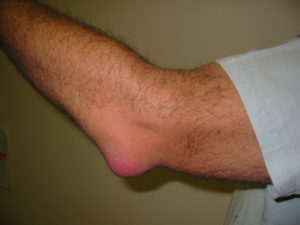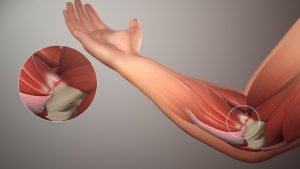
Biceps Tendinopathy
Typical Symptoms
Biceps tendinopathy can present with pain at the front of the elbow, particularly with supination (turning palm upwards) movements of the forearm and flexing (bending) the arm. It can lead to difficulty carrying items, doing activities such as pull-ups and rows.
With repeated exposure and continued activity there can be stiffness and a dull ache in the tendon.

What causes it?
Biceps tendinopathy usually arises from an overuse or overload of the tendon, particularly if there is a sudden increase in load from doing nothing at all or non-progressive change in the weight carried. In situations where there is repeated exposure, it can lead to chronic pain and micro-tears within the tendon.
How can I help myself?
It is important to identify how and why this may have occurred; if it is due to a particular activity and you are still doing this, perhaps your technique needs to be addressed, then offloading or working with a coach can help correct poor technique. Indeed, correcting technique and offloading for a period might be all that is required.
If pain is significant, then analgesia, such as anti-inflammatories, can also help with pain symptoms.
When to seek help?
If your symptoms are not improving despite offloading and changing your technique, or if your symptoms are impacting on other areas of your life or activities, perhaps you should consider seeking help.
What are the treatment options?
Once your clinician has assessed you with a history and clinical examination, they may perform an ultrasound scan for assessment, but the Biceps Tendon is often quite challenging to visualise around the elbow. If there is concern that you may have a tear, further investigation with an MRI scan may be undertaken.
In situations where symptoms are ongoing, a cortisone injection around the tendon can help to settle symptoms, but this must be done in conjunction with correct rehabilitation. If a tear is seen, a PRP injection can be considered or a surgical intervention may be warranted.



